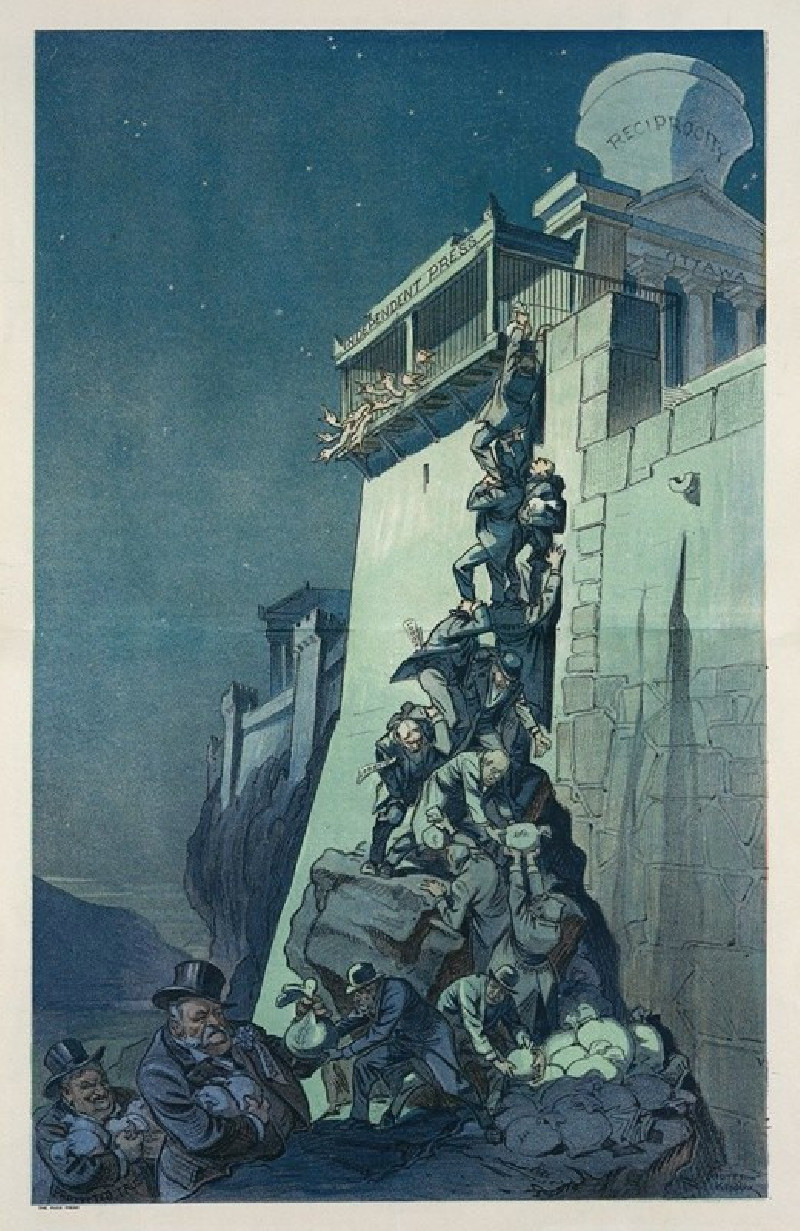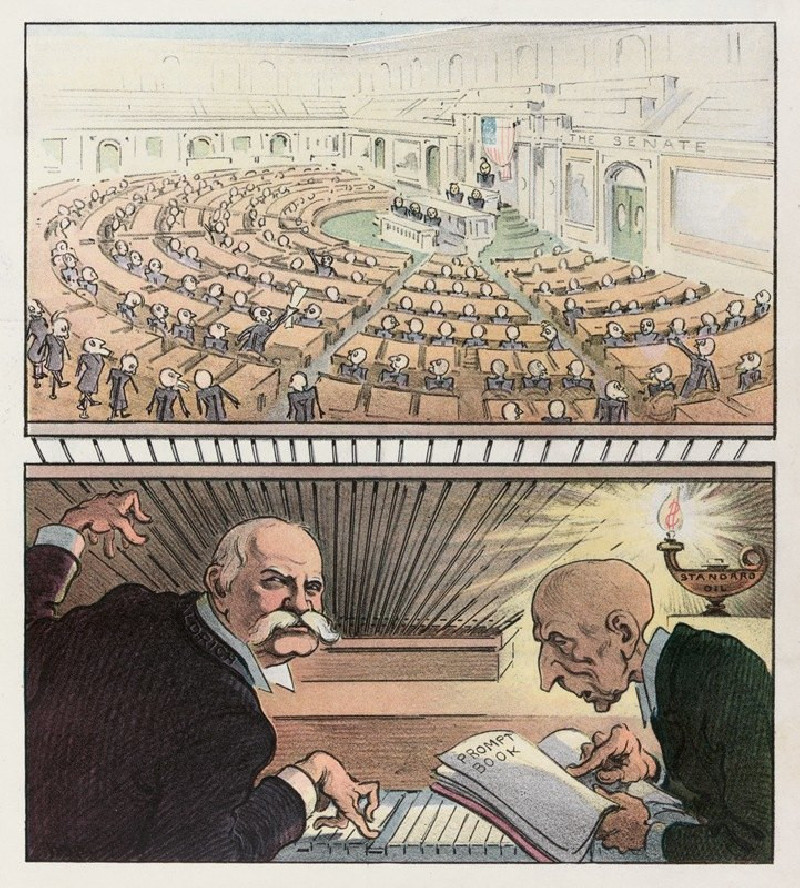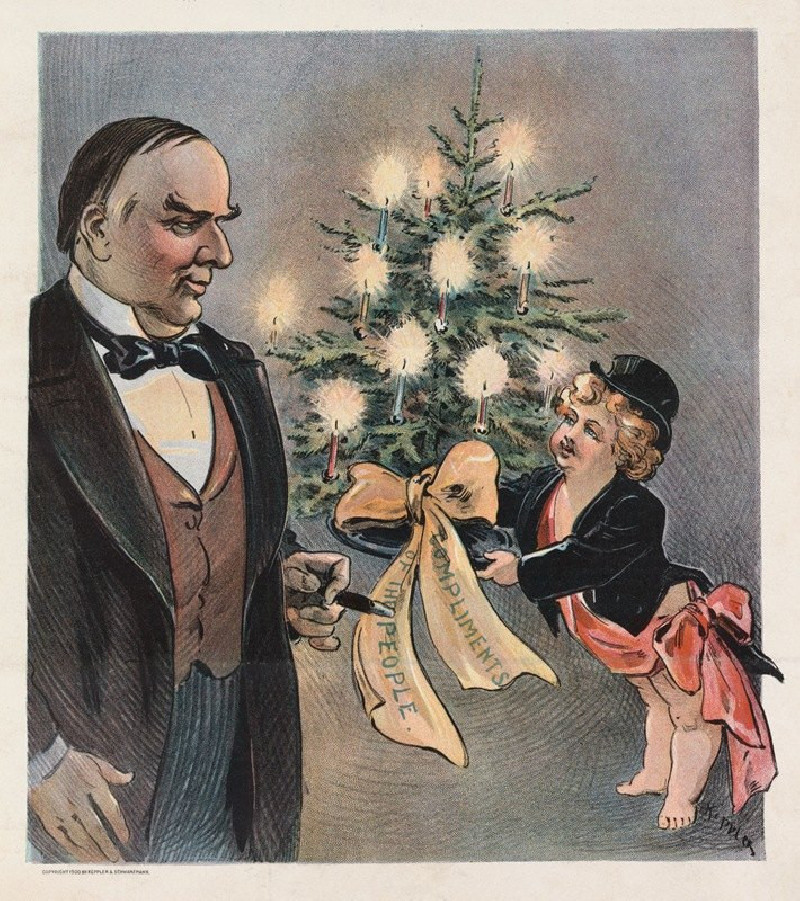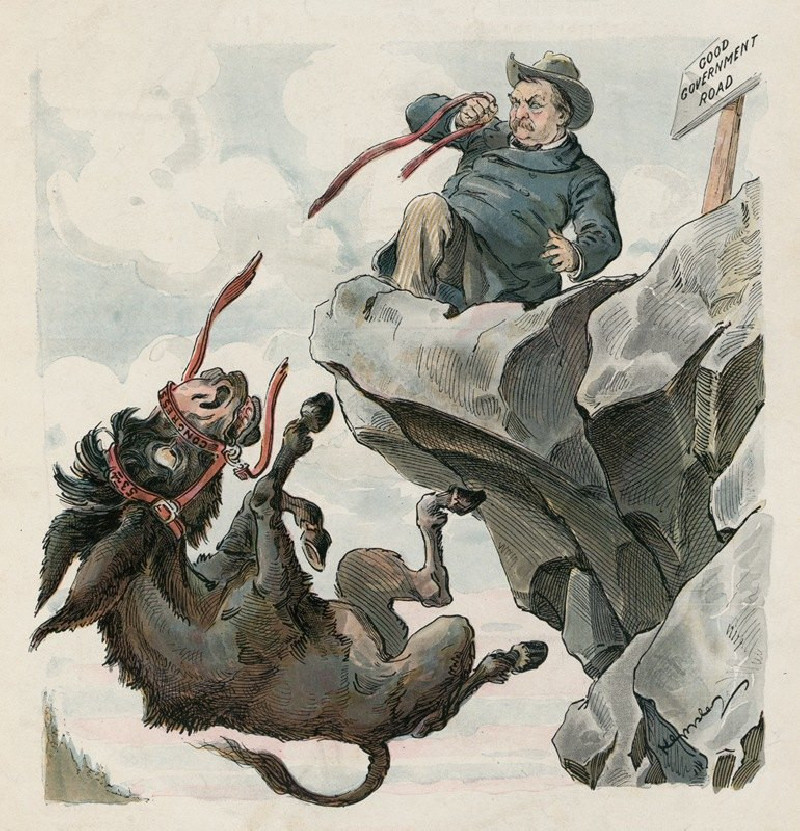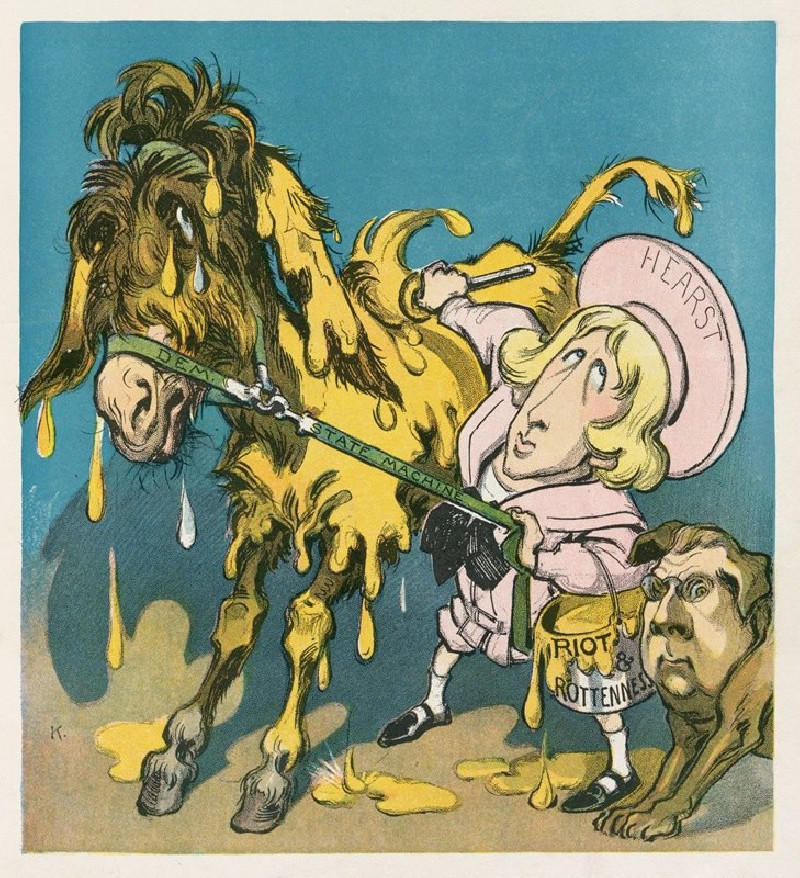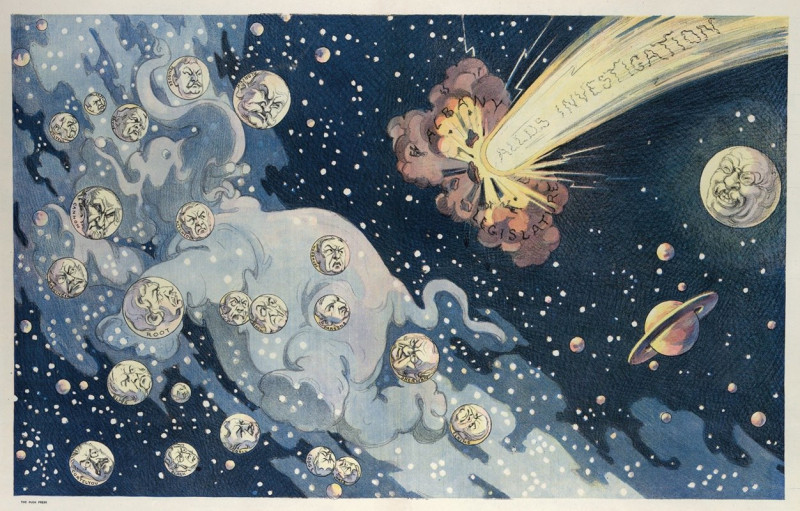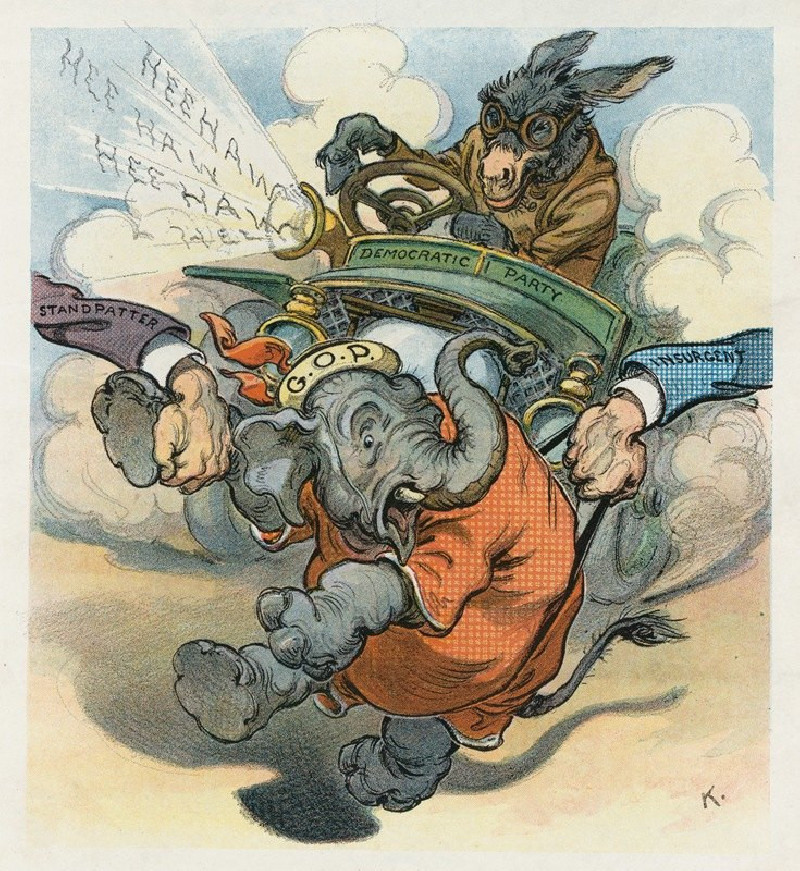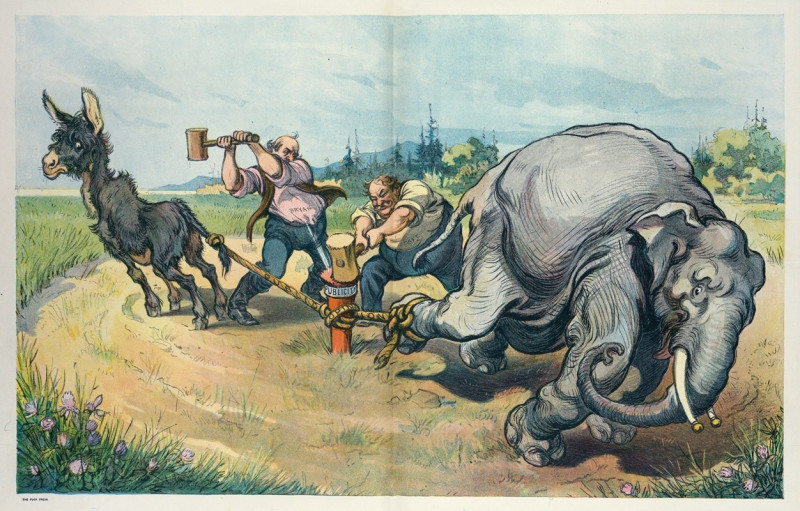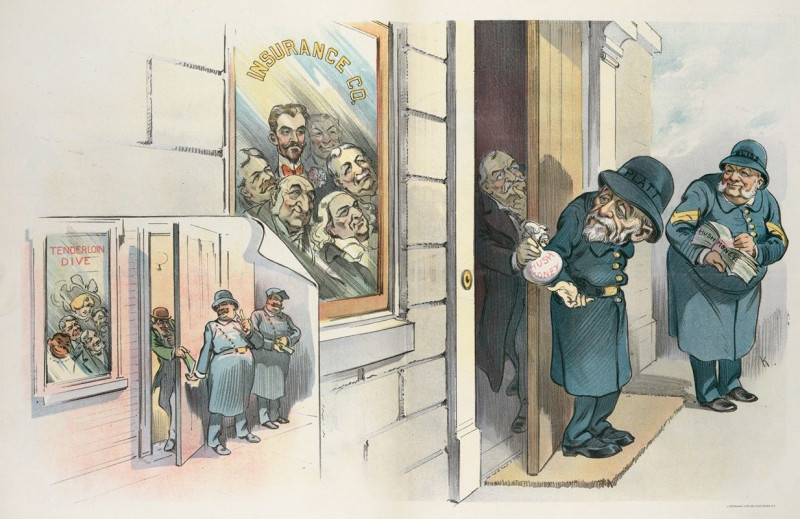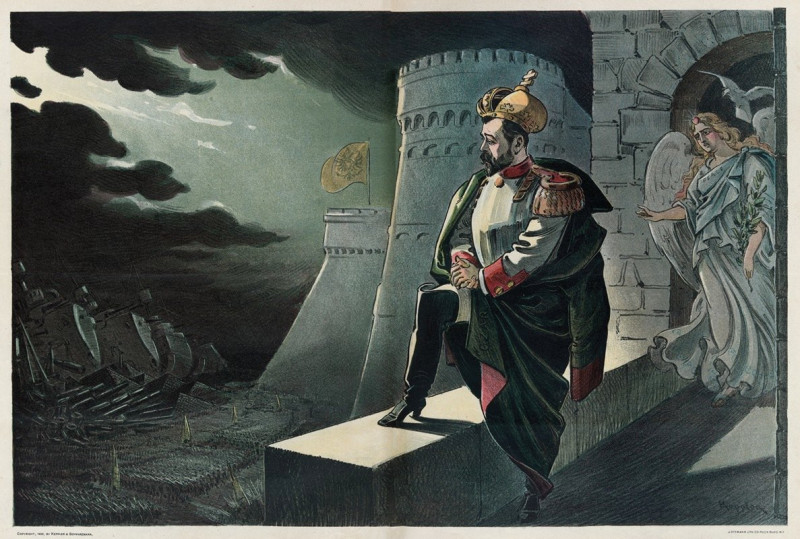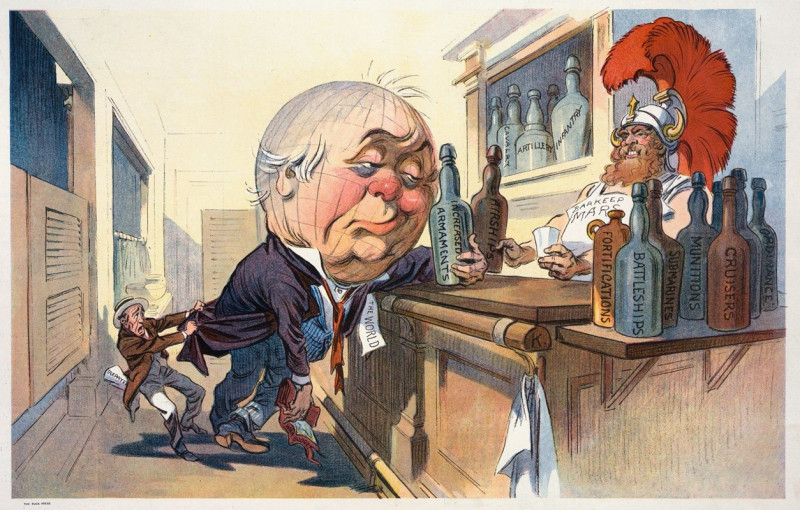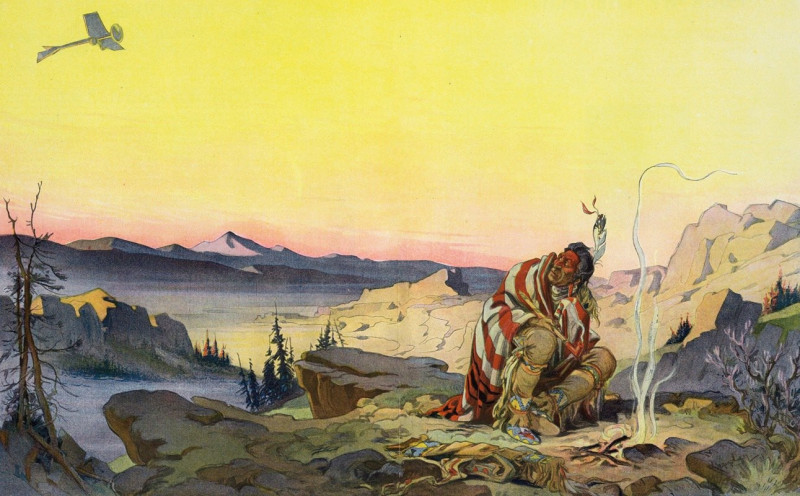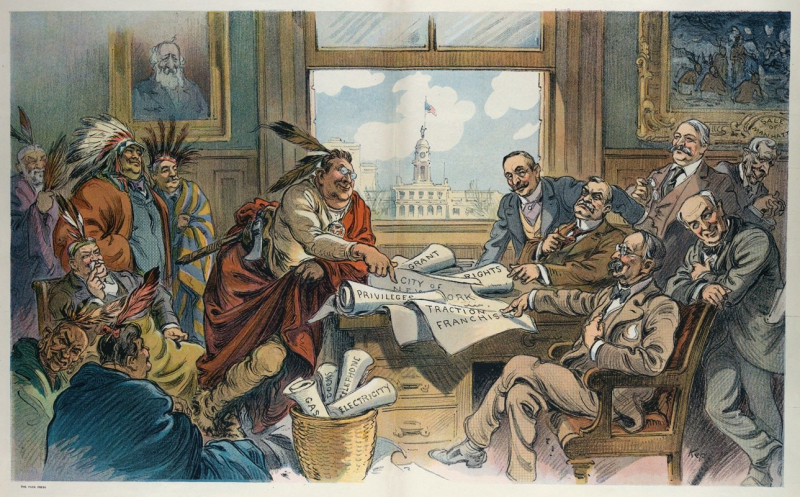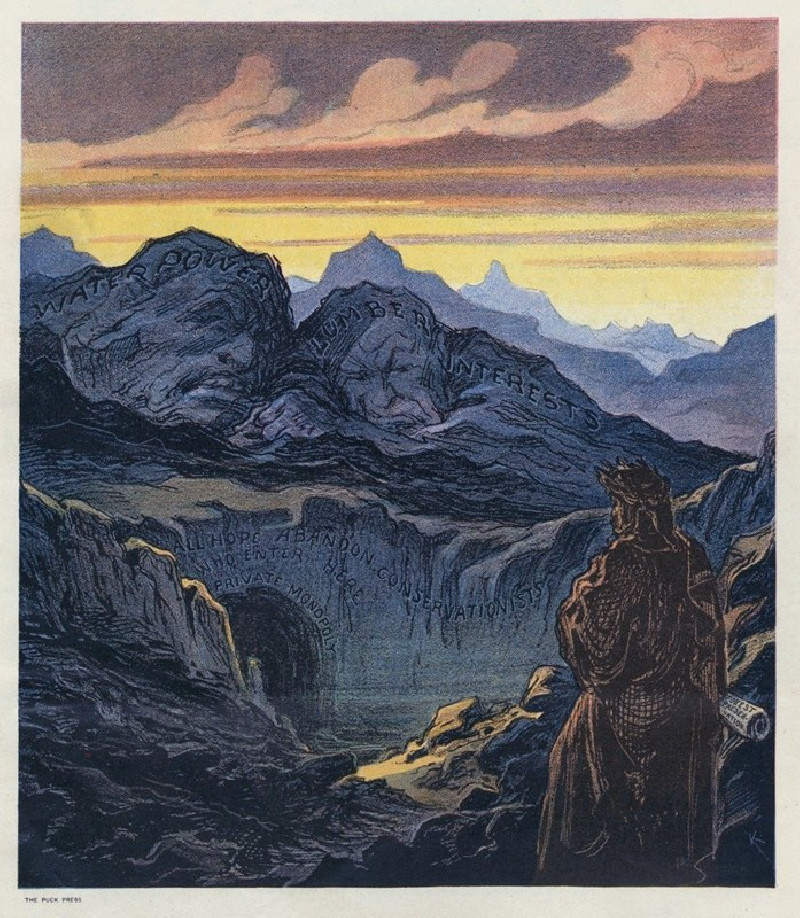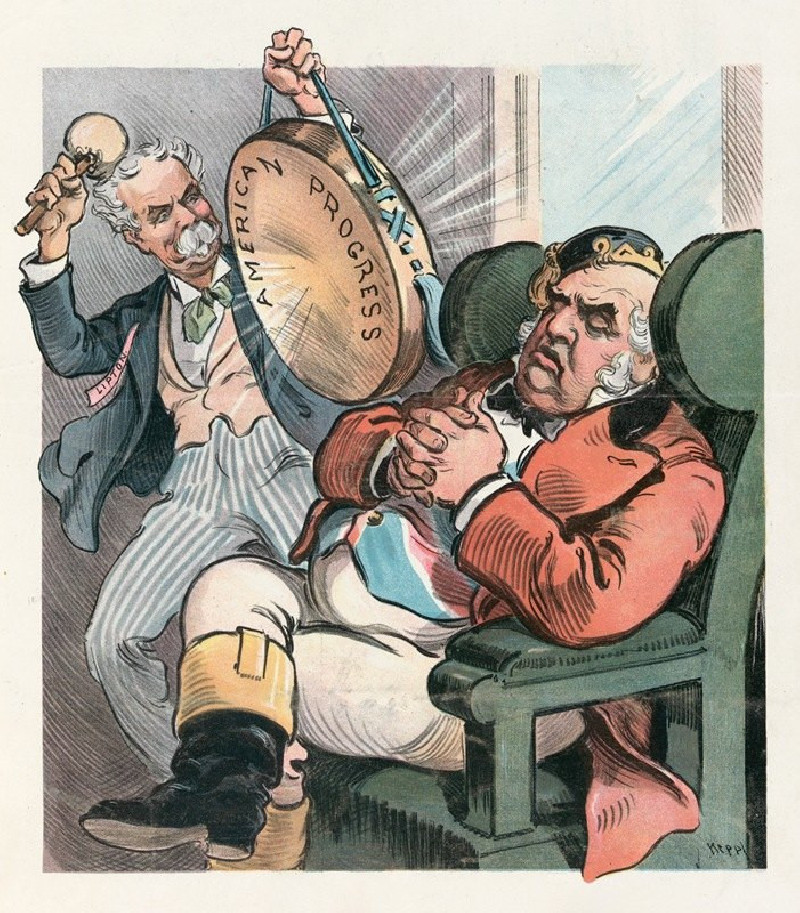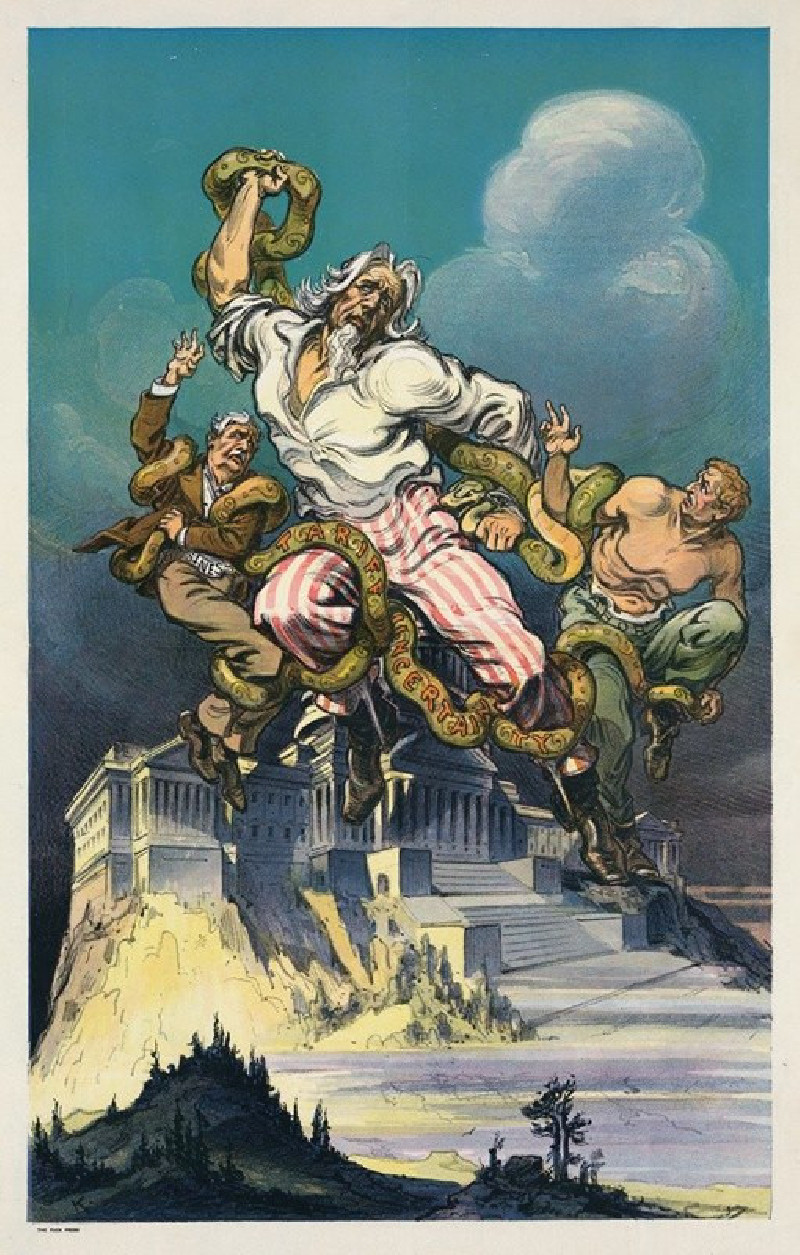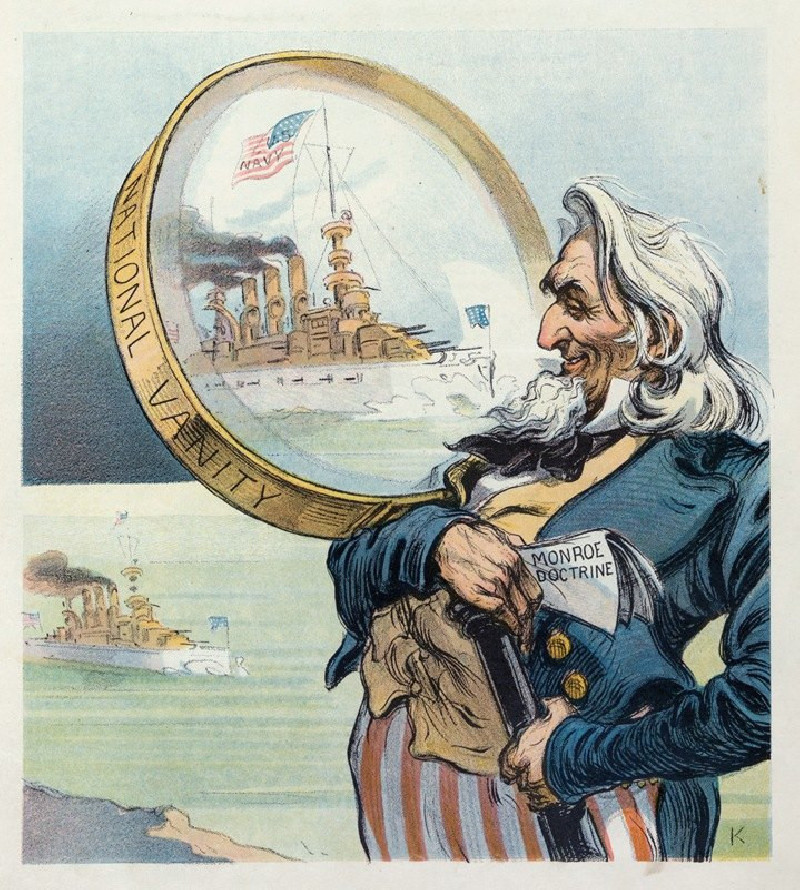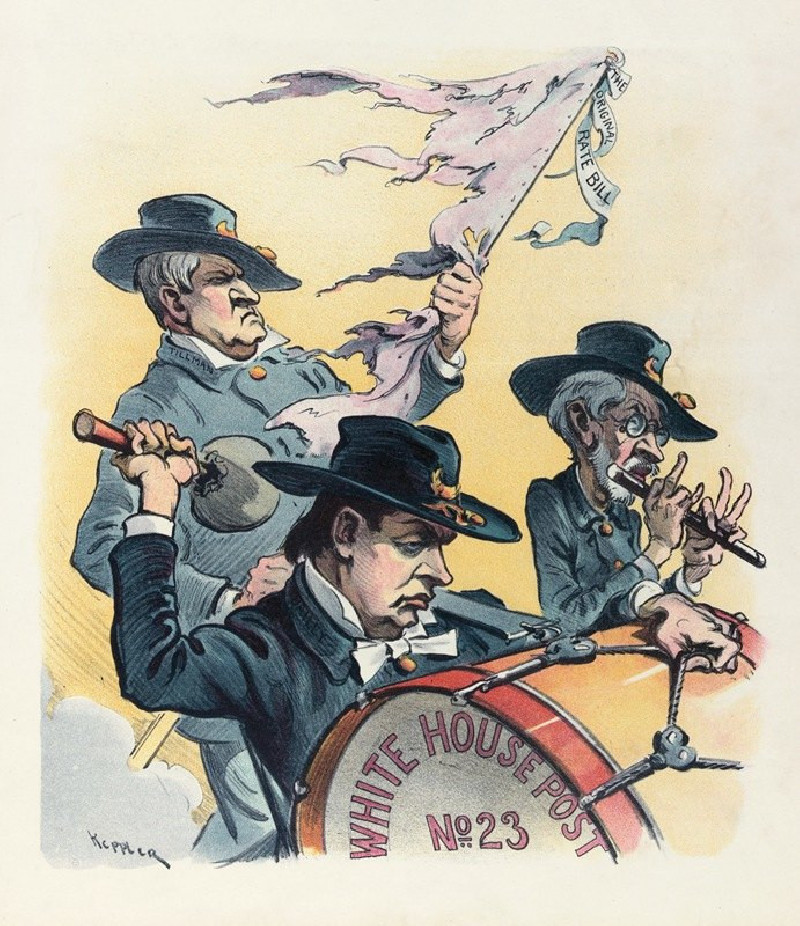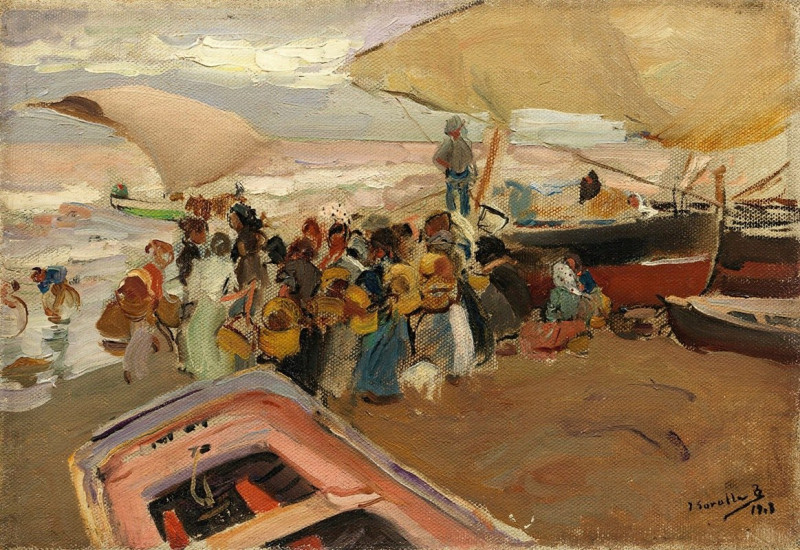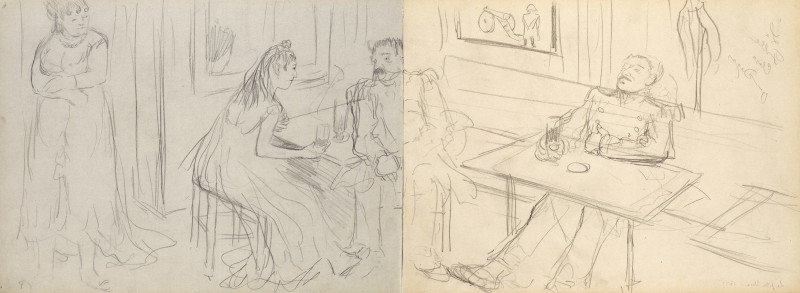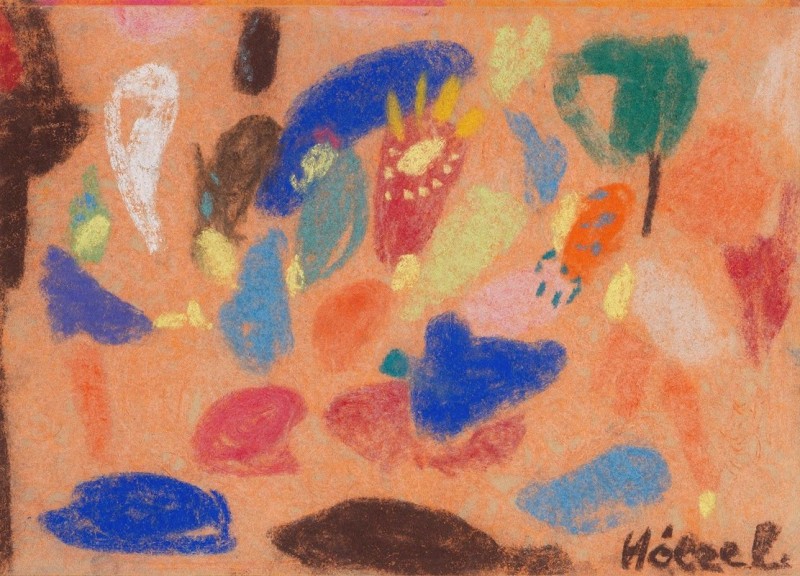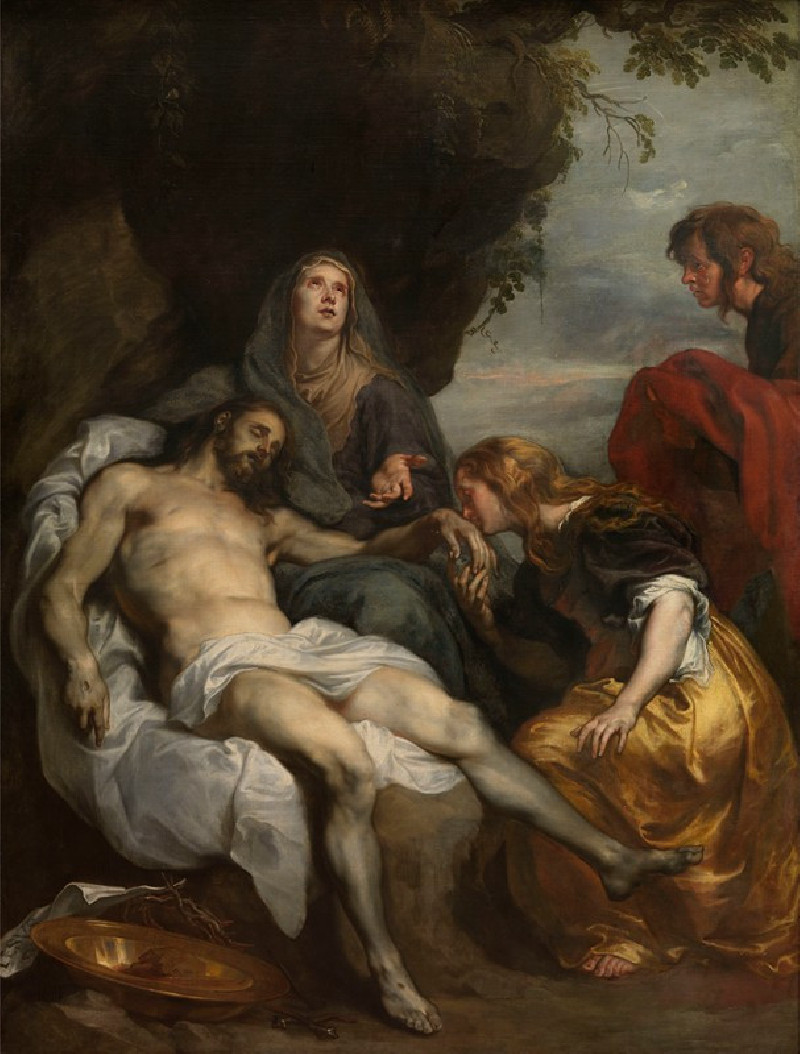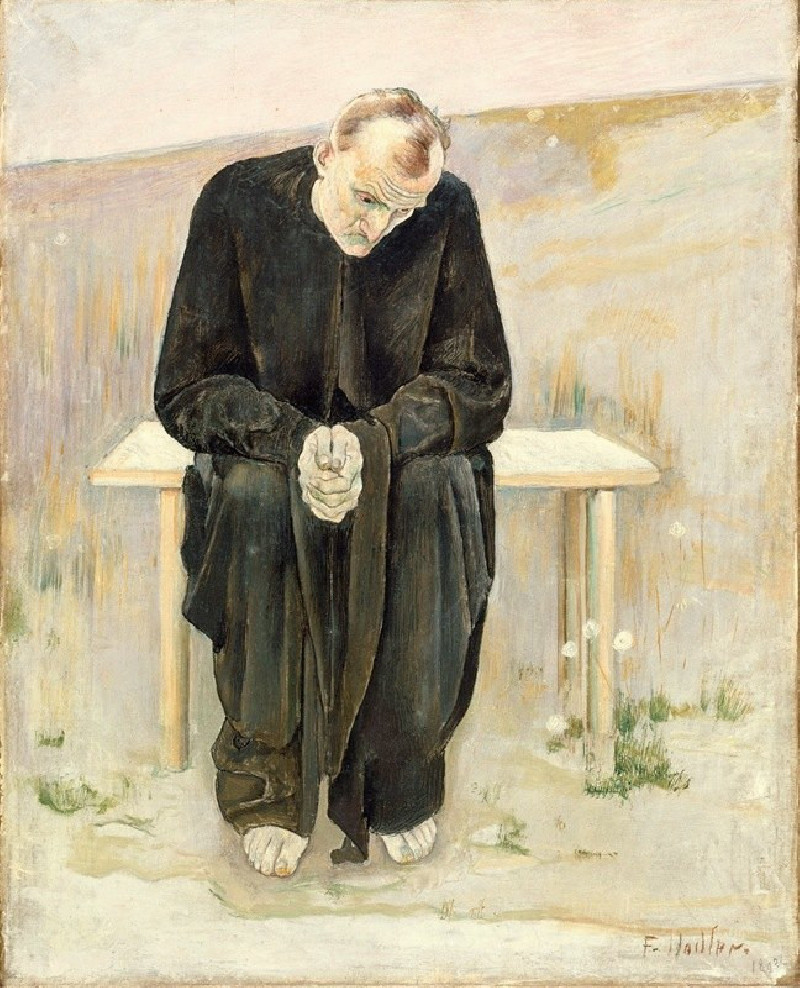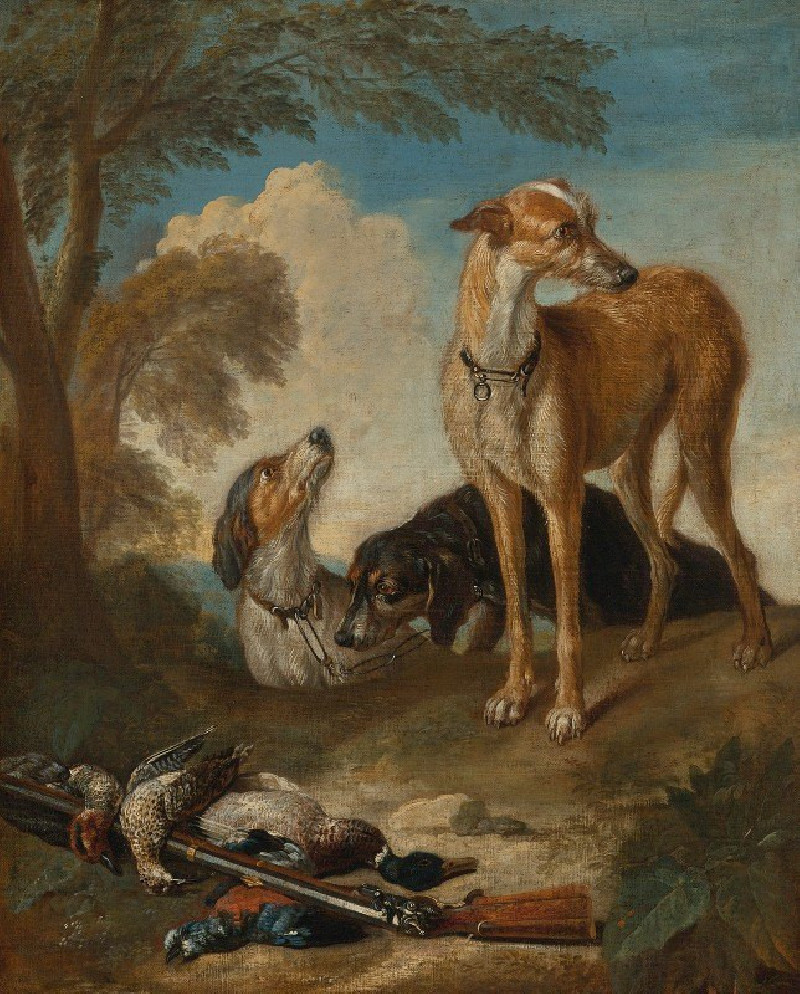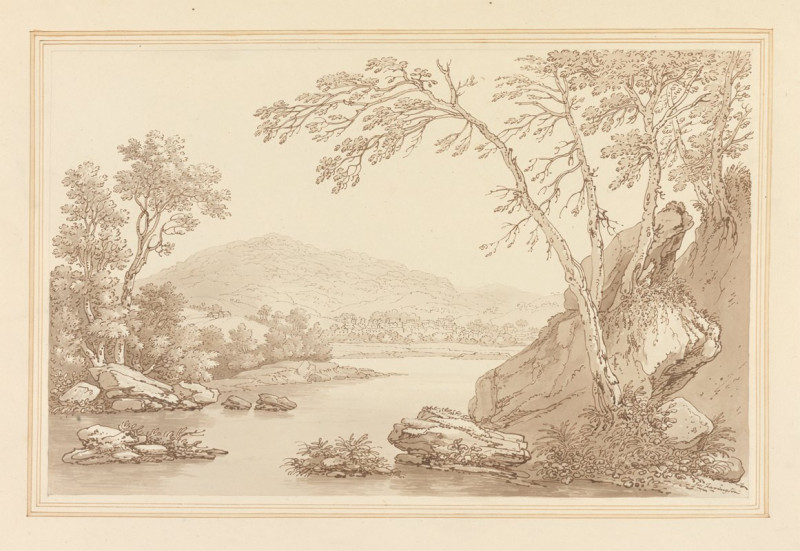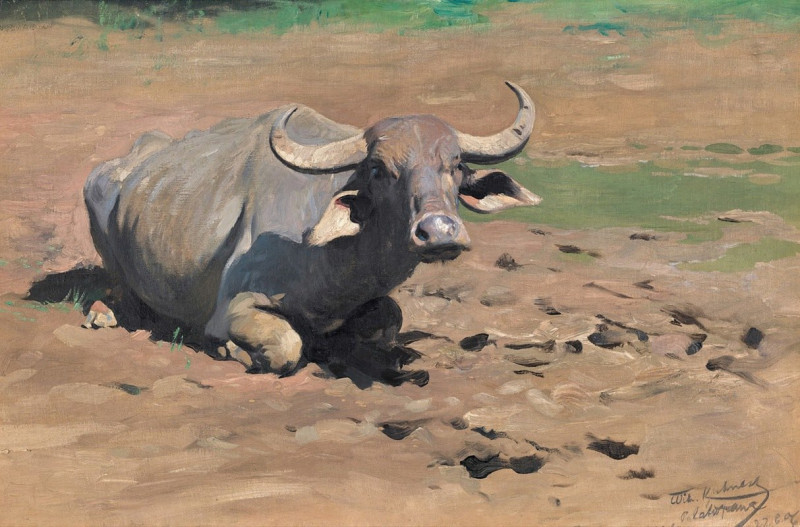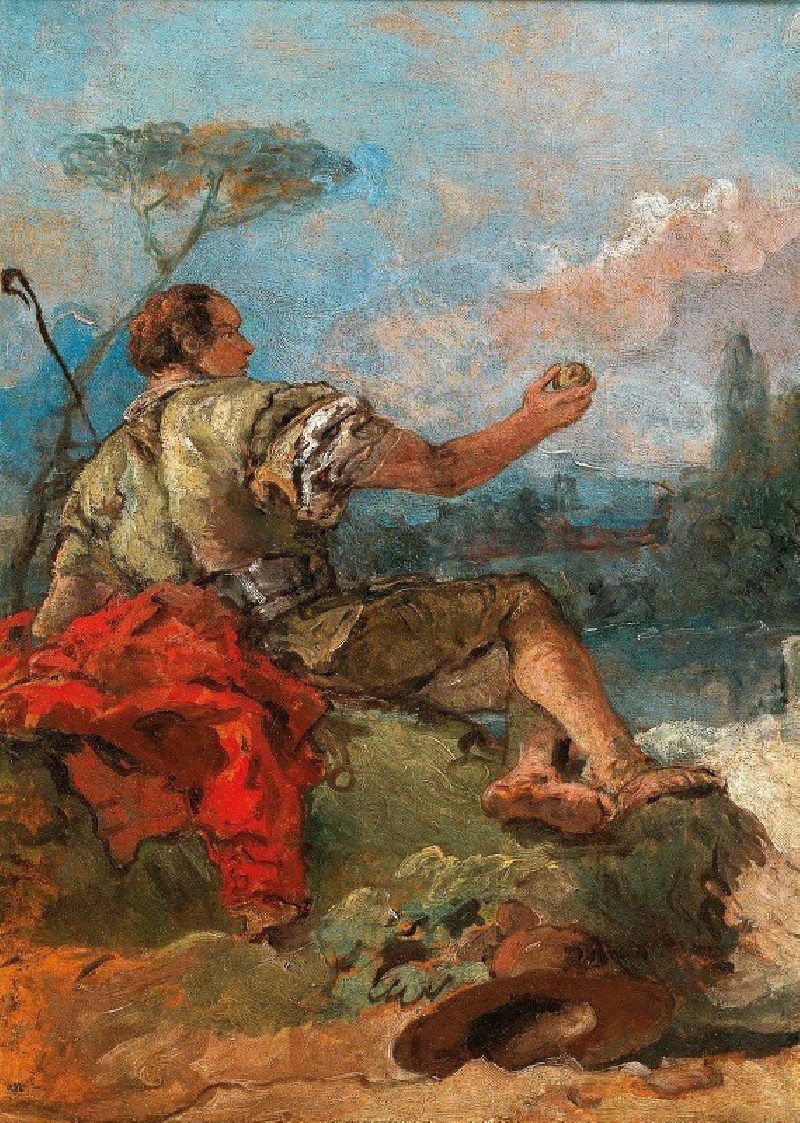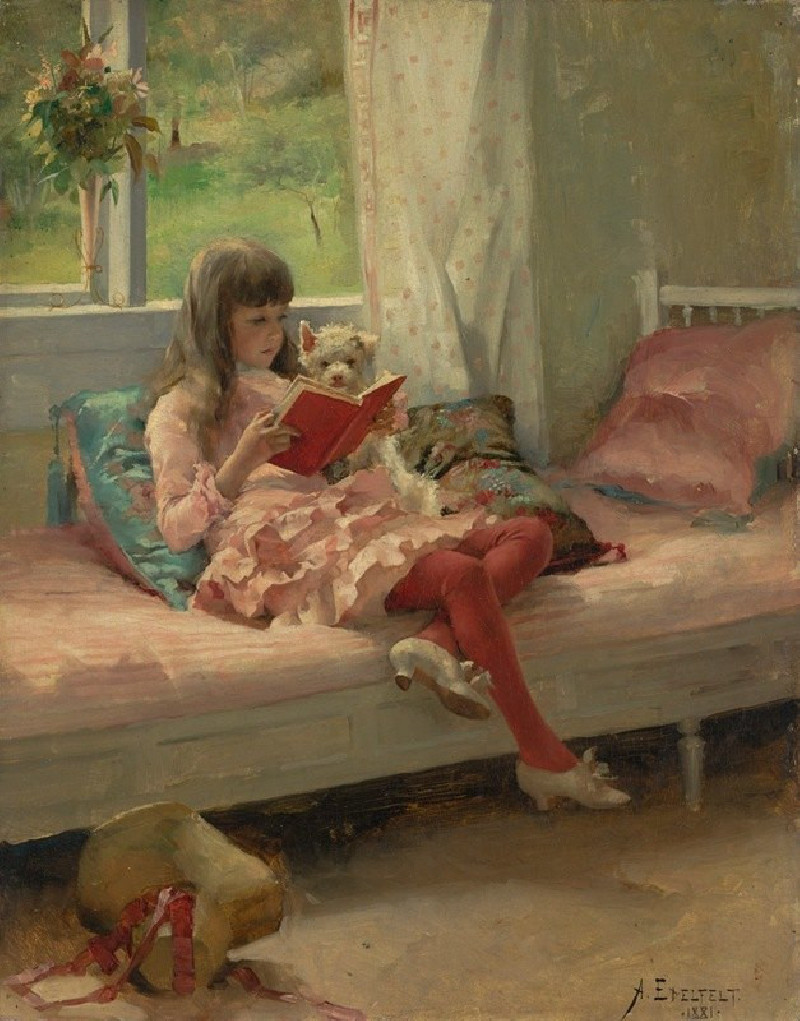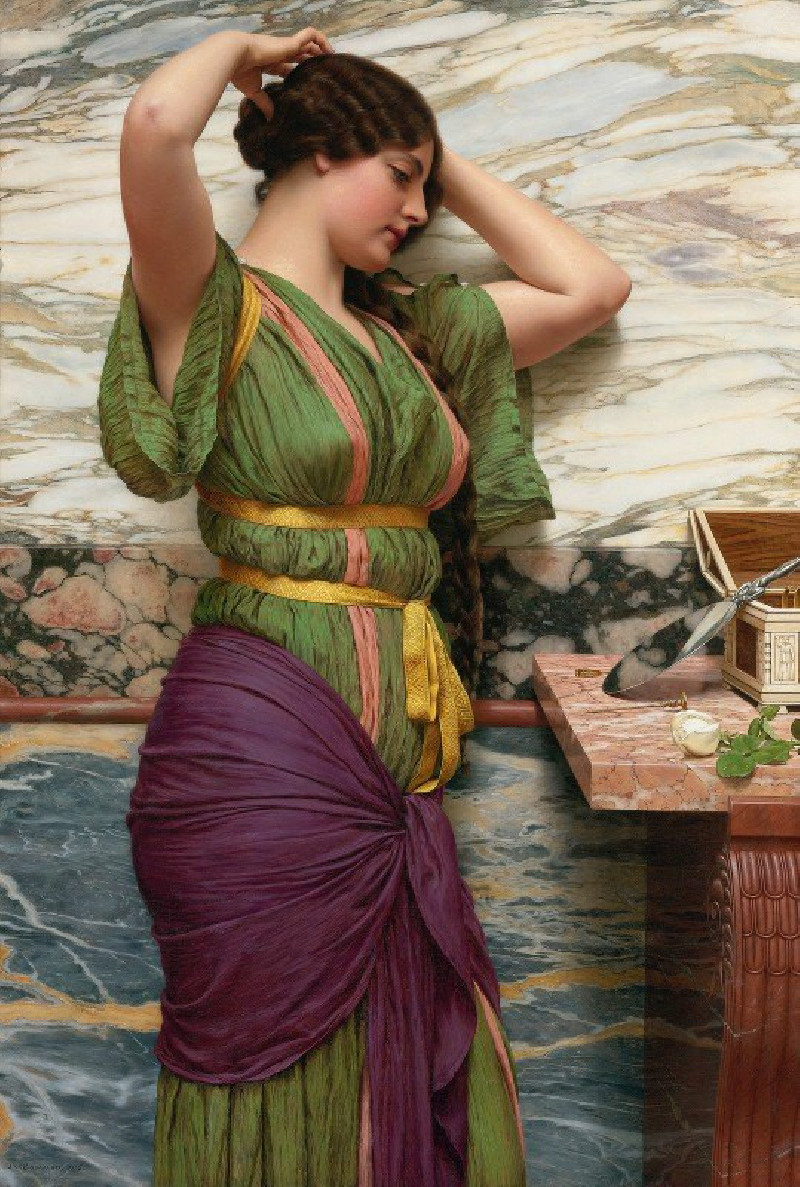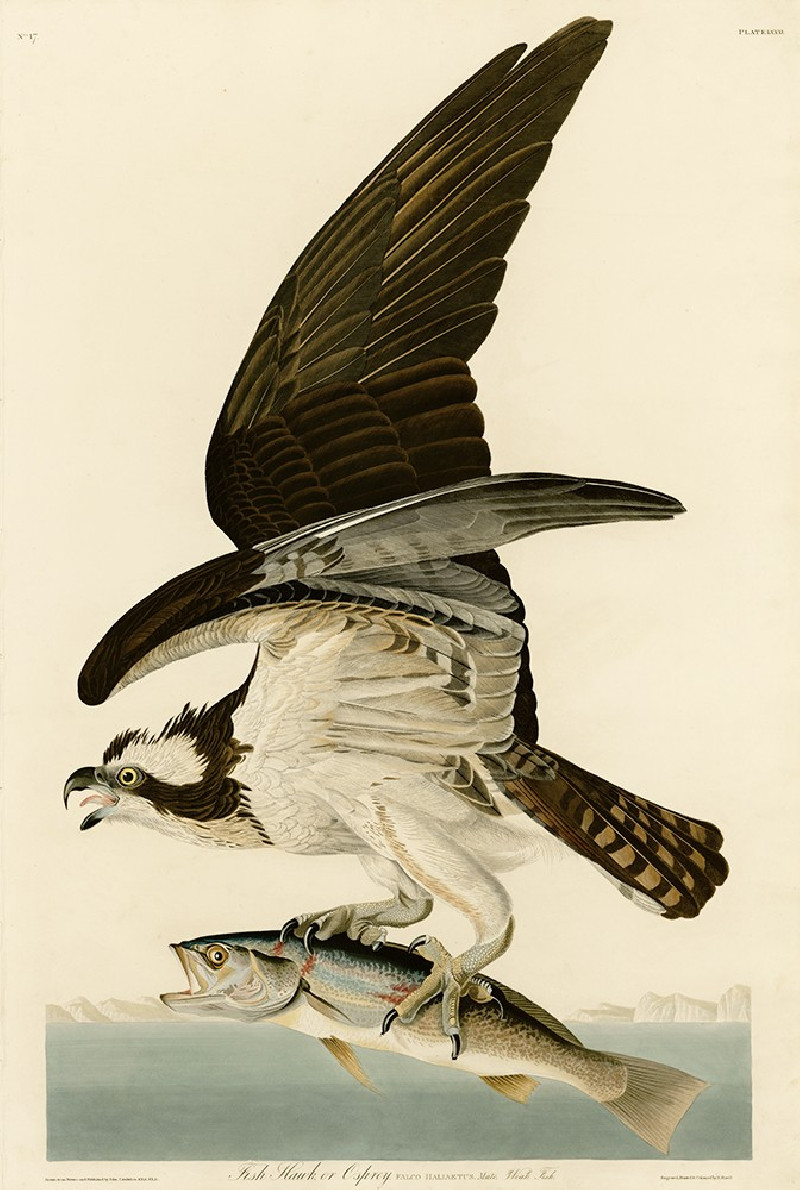The new South – the triumph of free labor (1895)
Technique: Giclée quality print
Recommended by our customers
More about this artwork
Udo Keppler's 1895 painting, "The New South – the Triumph of Free Labor," presents a vivid illustration of the transformative power of free labor in the South post-Civil War. In the forefront of this colorful work, a robust figure symbolizing free labor dominates the scene. Clad in worn trousers and a shirt, with a band labeled "FREE LABOR" draped across his chest, he rests confidently on a plow with industrial and agricultural tools scattered at his feet. This symbolizes the foundational role of free labor in rebuilding and driving the South's economy.The painting extends into a bustling background where a statue of Abraham Lincoln stands tall, overseeing a vibrant, industrious landscape that spans towards a horizon marked by modern buildings and a fairground bustling with activity. Crowds of well-dressed people, hinting at a society moving forward, gather in admiration and celebration around the statue, underscoring Lincoln’s enduring legacy in shaping this new era.In the distance, banners reading "PROSPERITY" and "ATLANTA EXPOSITION" fly high, suggesting the scene might be set during the Atlanta Exposition of 1895, a symbol of Southern progress and potential. Keppler’s use of bright, hopeful colors and the dynamic composition of advancing crowds contrasts sharply with the discarded symbols of the old South--a broken wheel and chain--that lay near the free labor figure, emphasizing the rejection of the past's bondage towards a promising future of freedom and economic prosperity.This painting is not only a historical commentary but also a powerful depiction of hope and progress, celebrating the South's embrace of modernity and the pivotal role of emancipated labor in shaping its future.
Delivery
Returns
Udo J. Keppler, since 1894. known as Joseph Keppler, Jr., was an American political cartoonist, publisher, and Native American advocate. The son of cartoonist Joseph Keppler (1838–1894), who founded Puck magazine, the younger Keppler also contributed to cartoons, and after his father's death became co-owner of the magazine under the name Joseph Keppler. He was also a collector of Native American artifacts.


